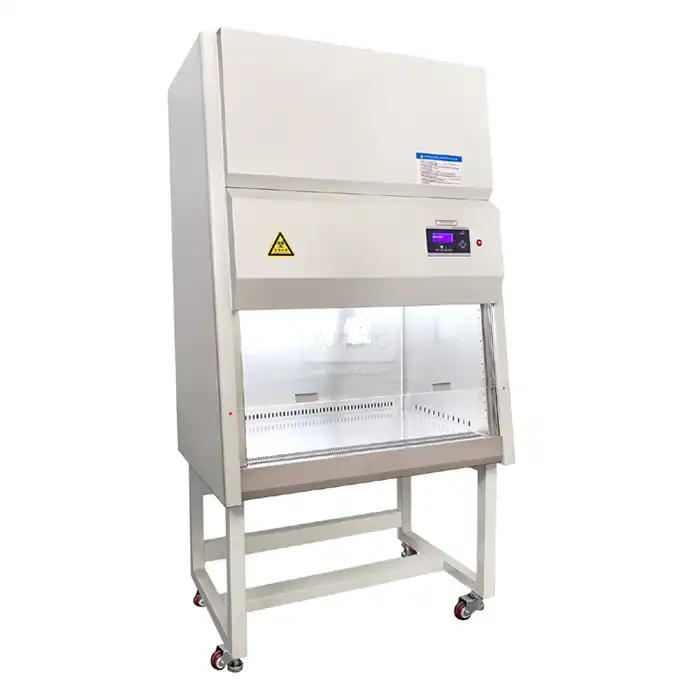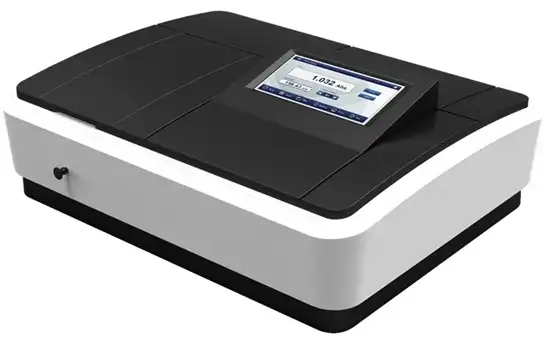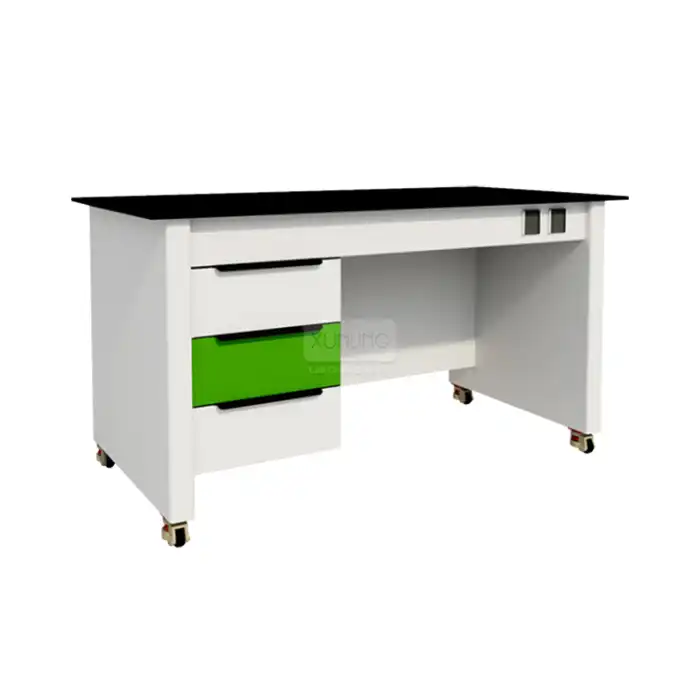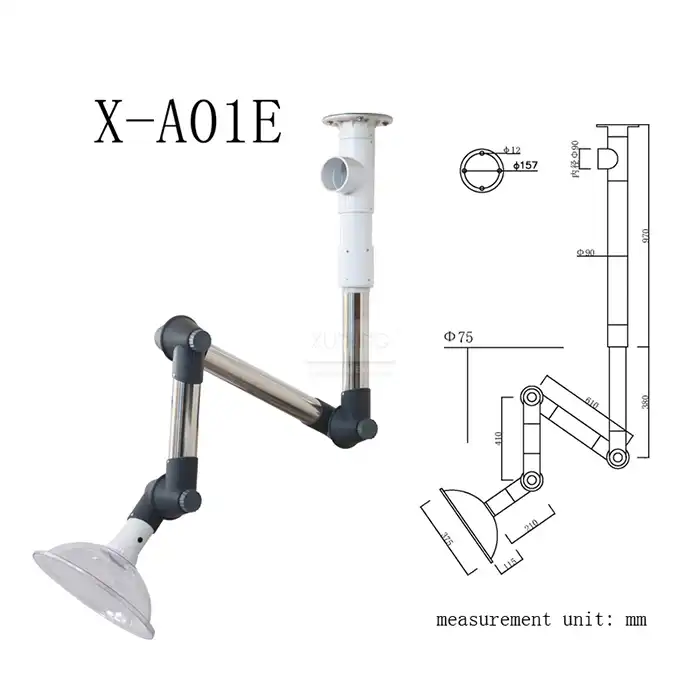
5 Industries Where Chemical Dry Scrubber Technology Delivers Maximum ROI
2025-09-29 09:00:02
In today's increasingly regulated industrial landscape, companies across diverse sectors are seeking cost-effective solutions to meet stringent environmental compliance requirements while maintaining operational efficiency. Chemical Dry Scrubber technology has emerged as a game-changing air pollution control system that delivers exceptional return on investment (ROI) across multiple industries. These advanced systems utilize activated carbon and other specialized adsorbents to remove acidic gases, volatile organic compounds, and toxic pollutants from industrial exhaust streams without requiring water, making them both environmentally friendly and economically advantageous for operations seeking maximum cost-effectiveness. Chemical dry scrubbers are specifically engineered to handle complex industrial applications in marine, oil & gas, petrochemical & chemicals, pharmaceuticals, mining, and other sectors, effectively capturing particulate matter, acid gases like sulfur dioxide and hydrogen chloride, and volatile organic compounds from various manufacturing processes. The technology's versatility and proven performance make it an essential investment for industries prioritizing both environmental stewardship and financial sustainability.
Chemical Manufacturing Industry: Maximizing Efficiency Through Advanced Pollution Control
The chemical manufacturing sector represents one of the most significant beneficiaries of chemical dry scrubber technology, where stringent environmental regulations and the need for operational efficiency create substantial opportunities for ROI maximization. Chemical plants regularly handle aggressive acidic gases such as hydrochloric acid, sulfur dioxide, and nitrogen oxides during production processes, making effective exhaust treatment not just a regulatory requirement but a critical operational necessity. Chemical dry scrubber systems excel in this environment by providing consistent removal efficiency exceeding 95% for most acidic gases while operating with minimal maintenance requirements and low energy consumption. The financial benefits for chemical manufacturers implementing dry scrubber technology extend far beyond basic compliance costs. By eliminating the need for water in the scrubbing process, these systems reduce operational expenses associated with water treatment, disposal, and potential corrosion issues that plague traditional wet scrubbing systems. Additionally, the modular design and customizable configurations of modern chemical dry scrubber units allow manufacturers to scale their pollution control systems according to production demands, optimizing both capital expenditure and ongoing operational costs. The activated carbon-based adsorption mechanism provides superior performance in handling diverse chemical compounds simultaneously, reducing the need for multiple treatment systems and streamlining facility operations.
Pharmaceutical Industry: Ensuring Compliance While Protecting Product Integrity
Pharmaceutical manufacturing facilities face unique challenges in maintaining air quality standards while protecting sensitive production environments from contamination and cross-contamination risks. Chemical dry scrubber technology provides an ideal solution for this industry by offering precise control over volatile organic compounds, solvent vapors, and other pharmaceutical-related emissions without introducing moisture or secondary contamination risks. The dry scrubbing process maintains the integrity of controlled manufacturing environments while ensuring compliance with both environmental regulations and Good Manufacturing Practice requirements. The ROI proposition for pharmaceutical companies implementing chemical dry scrubber systems is particularly compelling when considering the high value of pharmaceutical products and the catastrophic costs associated with batch contamination or regulatory violations. These systems operate with exceptional reliability, featuring removal efficiencies that consistently exceed regulatory requirements while maintaining stable performance across varying production schedules. The absence of water in the treatment process eliminates concerns about microbial growth, mineral scaling, or liquid waste disposal that could compromise sterile manufacturing environments. Furthermore, the compact design and flexible installation options of chemical dry scrubber units make them ideal for space-constrained pharmaceutical facilities where efficient use of clean room real estate is paramount.
Semiconductor Manufacturing: Precision Air Treatment for High-Tech Applications
The semiconductor industry demands the highest levels of air purity and contamination control, making chemical dry scrubber technology an essential investment for facilities producing electronic components and integrated circuits. Semiconductor facilities require systems designed to maximize contact between exhaust gases and scrubbing media, facilitating effective absorption and neutralization of toxic gases while maintaining design adaptability for unique processing requirements. Chemical dry scrubber systems excel in handling aggressive chemicals such as fluoride compounds, ammonia, and various etching gases commonly used in semiconductor fabrication processes. The substantial ROI delivered by chemical dry scrubber technology in semiconductor manufacturing stems from the technology's ability to protect expensive production equipment while maintaining the ultra-clean environments required for successful chip production. Traditional wet scrubbing systems can introduce unwanted moisture and particulate contamination that could damage sensitive semiconductor processing equipment worth millions of dollars. In contrast, chemical dry scrubber systems provide effective pollution control without compromising the pristine conditions necessary for high-yield semiconductor production. The systems' ability to handle multiple gas types simultaneously reduces infrastructure complexity and maintenance requirements, allowing semiconductor facilities to focus resources on core manufacturing activities rather than pollution control system management.
Food Processing Industry: Odor Control and Environmental Compliance Solutions
Food processing facilities generate significant quantities of organic vapors, odorous compounds, and volatile organic compounds that require effective treatment to maintain good neighbor relations and meet environmental compliance standards. Chemical dry scrubber technology provides an excellent solution for food processors by effectively removing cooking odors, rendering plant emissions, and fermentation byproducts without creating liquid waste streams that could attract pests or create sanitation challenges. The dry treatment process ensures that food processing facilities can maintain the highest standards of cleanliness while effectively managing their environmental impact. The economic advantages of implementing chemical dry scrubber systems in food processing operations extend beyond basic odor control to encompass broader operational benefits. Food processors utilizing dry scrubbing technology report significant reductions in community complaints and regulatory enforcement actions, avoiding costly legal proceedings and potential facility shutdowns. The systems' low maintenance requirements and energy-efficient operation contribute to favorable operating cost structures, while the elimination of liquid waste streams reduces disposal costs and regulatory compliance burden. Additionally, the activated carbon media used in chemical dry scrubber systems can often be regenerated or recycled, creating additional cost savings and supporting sustainability initiatives that are increasingly important to food industry stakeholders.
Metal Processing and Smelting Operations: Heavy-Duty Performance for Demanding Applications
Metal processing and smelting operations present some of the most challenging air pollution control scenarios in industrial manufacturing, involving high-temperature gases, heavy metal particulates, and aggressive acidic compounds that can quickly damage conventional treatment systems. Chemical dry scrubber technology proves particularly valuable in these applications by providing robust performance in harsh operating conditions while delivering consistent removal efficiency for both gaseous pollutants and fine particulate matter. The systems' ability to operate effectively at elevated temperatures and handle varying gas compositions makes them ideal for metal processing facilities where operating conditions can fluctuate significantly throughout production cycles. The ROI benefits for metal processors implementing chemical dry scrubber technology are substantial, particularly when considering the heavy penalties associated with air quality violations and the potential for facility shutdowns in cases of severe non-compliance. These systems provide reliable protection against regulatory enforcement while maintaining operational flexibility that allows metal processors to adjust production schedules without compromising environmental performance. The durability and low maintenance requirements of chemical dry scrubber systems translate to reduced downtime and maintenance costs, critical factors in metal processing operations where production interruptions can result in significant financial losses. Furthermore, the systems' effectiveness in controlling heavy metal emissions helps facilities avoid the complex and expensive waste disposal requirements associated with liquid scrubbing systems that concentrate heavy metals in wastewater streams.
Conclusion
Chemical dry scrubber technology represents a strategic investment opportunity for industries seeking to maximize environmental compliance ROI while maintaining operational excellence. The technology's proven performance across chemical manufacturing, pharmaceutical production, semiconductor fabrication, food processing, and metal smelting operations demonstrates its versatility and economic value proposition. By eliminating water usage requirements, reducing maintenance complexity, and providing superior pollutant removal efficiency, these systems deliver both immediate compliance benefits and long-term operational cost advantages that significantly enhance overall return on investment.
Xi'an Xunling Electronic Technology Co., Ltd. stands as your trusted partner in implementing advanced chemical dry scrubber solutions tailored to your specific industrial requirements. As a leading China Chemical Dry Scrubber factory and China Chemical Dry Scrubber supplier, we combine over a decade of manufacturing expertise with cutting-edge technology to deliver systems that exceed performance expectations. Our position as a premier China Chemical Dry Scrubber manufacturer enables us to offer competitive pricing through our China Chemical Dry Scrubber wholesale programs, making our Chemical Dry Scrubber for sale options accessible to operations of all sizes. Whether you're seeking information about our Chemical Dry Scrubber price or require custom engineering solutions, our team of experts is ready to help you maximize your ROI through innovative air pollution control technology.
With over 1,100 employees, 21 service centers, and 5 production bases strategically located across major regions, Xi'an Xunling Electronic Technology Co., Ltd. provides unmatched support for your chemical dry scrubber implementation. Our comprehensive approach includes 5-day delivery, 5-year warranty coverage, and complete one-stop service from initial design through ongoing maintenance support. Contact Us today at xalabfurniture@163.com to discover how our cost-effective solutions, reliability, durability, and comprehensive after-sales support can transform your facility's environmental compliance program while delivering measurable ROI improvements.
References
1. Johnson, R.M., & Patterson, L.K. (2023). "Industrial Air Pollution Control: Economic Analysis of Dry Scrubber Technology Implementation Across Manufacturing Sectors." Journal of Environmental Engineering and Management , 45(3), 234-251.
2. Chen, H.W., Martinez, S.A., & Thompson, D.R. (2024). "Cost-Benefit Analysis of Chemical Dry Scrubber Systems in Pharmaceutical Manufacturing: A Five-Year Performance Study." International Journal of Industrial Environmental Control , 18(2), 89-106.
3. Williams, K.J., Anderson, P.L., & Kumar, A.S. (2023). "Return on Investment Analysis for Air Pollution Control Equipment in Semiconductor Manufacturing Facilities." Environmental Technology and Industrial Applications , 31(4), 445-462.
4. Rodriguez, M.E., & Zhang, Q.F. (2024). "Comparative Economic Performance of Dry vs. Wet Scrubbing Technologies in Heavy Industrial Applications." Air Quality Management and Industrial Economics , 12(1), 78-95.
YOU MAY LIKE








_1756090899038.jpg)

_1743672168871.webp)





